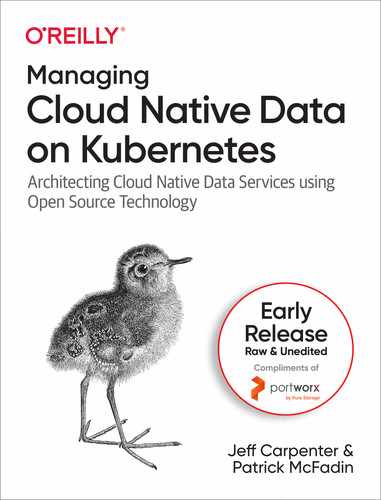Kubernetes has become the primary platform for deploying and managing cloud native applications. But because it was originally designed for stateless workloads, working with data on Kubernetes has been challenging. If you want to avoid the inefficiencies and duplicative costs of having separate infrastructure for applications and data, this practical guide can help. Using Kubernetes as your platform, you'll discover open source technologies that are designed and built for the cloud. Delve into case studies to avoid the pitfalls others have faced and explore new use cases. Get an insider's view of what's coming from the innovators who are creating next-generation architectures and infrastructure. And you'll learn how to:
Table of Contents
- 1.
Introduction to Cloud Native Data Infrastructure: Persistence, Streaming, and Batch Analytics
- Infrastructure Types
- What is Cloud Native Data?
- More Infrastructure, More Problems
- Kubernetes Leading the Way
- Managing Compute on Kubernetes
- Managing Network on Kubernetes
- Managing Storage on Kubernetes
- Cloud native data components
- Looking forward
- Getting ready for the revolution
- Adopt an SRE mindset
- Embrace Distributed Computing
- Summary
- 2.
Managing Data Storage on Kubernetes
- Docker, Containers, and State
- Managing State in Docker
- Bind mounts
- Volumes
- Tmpfs Mounts
- Volume Drivers
- Sidebar: File, Block, and Object Storage
- Kubernetes Resources for Data Storage
- Pods and Volumes
- PersistentVolumes
- PersistentVolumeClaims
- StorageClasses
- Kubernetes Storage Architecture
- Flexvolume
- Container Storage Interface (CSI)
- Container Attached Storage
- Container Object Storage Interface (COSI)
- Summary
- 3. Databases on Kubernetes the Hard Way
- Index
